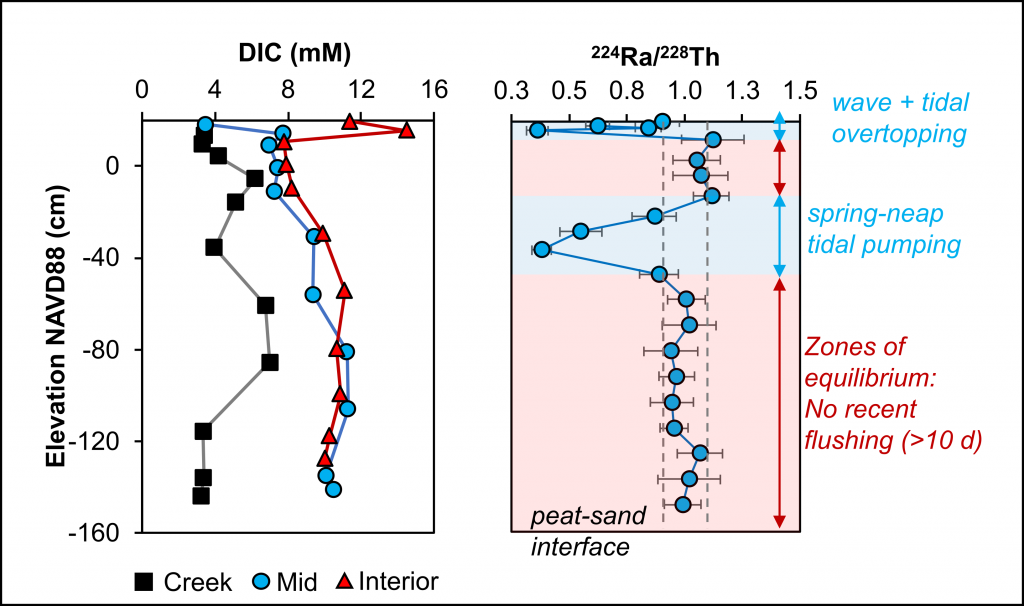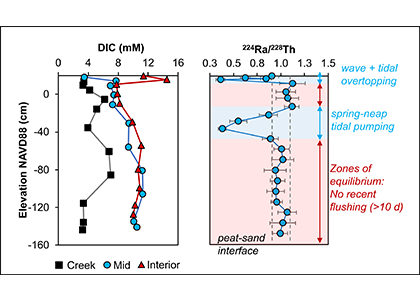Tidal wetlands are highly productive ecosystems that have the potential to sequester and bury vast quantities of atmospheric carbon dioxide, making them effective blue carbon habitats. There is emerging evidence that lateral export of dissolved carbon (outwelling) can greatly exceed carbon burial in blue carbon habitats. However, little is known about the spatial and temporal variability of lateral carbon exports, and how this subsurface pathway may respond with sea level rise.
In a recent paper published in Limnology and Oceanography, researchers collected sediment cores for radiochemical analyses across different salt marsh zones to find the key spatial positions of marsh sediment flushing. The majority of the dissolved inorganic carbon flux occurred at the subsurface interface intersected by low tide, where tidal “pumping” disproportionately drains near creekbank sediments, but not the higher elevation marsh interior. Sea level increase floods a greater proportion of the marsh area, so in shallow sediment there is increased flushing and dissolved carbon flux. Surprisingly, dissolved carbon flux varied by a factor of four between two marshes within the same estuary, demonstrating that marsh hydrogeology and dissolved carbon transport is highly variable in space and time.
The magnitude and role of dissolved lateral carbon exports, as compared to carbon burial, is a major knowledge gap in coastal carbon budgets. Accounting of dissolved carbon exports from tidal wetlands will become increasingly more important as we consider outwelling within blue carbon management frameworks, and further highlights the need for more comprehensive studies linking tidal wetland hydrogeology with biogeochemical cycling.

Figure 1. Left: Marsh porewater dissolved inorganic carbon concentration collected at near creek, mid-marsh and interior marsh stations during summer (Sage Lot Pond, MA). Right: Sediment core 224Ra:228Th activity ratios depicting zones of recent sediment flushing (blue shading, ratio <0.9) that facilitate dissolved carbon outwelling, and zones of equilibrium (red shading, minimal flushing; ratio ≥0.9).
Authors:
Joseph J. Tamborski (WHOI, Dalhousie Univ, Old Dominion Univ)
Meagan Eagle (USGS)
Barret L. Kurylyk (Dalhousie Univ)
Kevin D. Kroeger (USGS)
Zhaohui Aleck Wang (WHOI)
Paul Henderson (WHOI)
Matthew A. Charette (WHOI)




